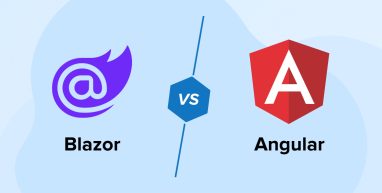
In this tech-savvy world, every organization wants to have a web application that can reach thousands of users which can eventually help them grow their business. For this, they hire top angular development company that have experts who can only work on existing web technologies but also use the latest frameworks and tools to create unique web apps. Developers prefer the two most popular web app development frameworks Angular and Blazor for web applications.
Angular was known as AngularJS until 2016. It was developed to enable the frontend developers to interact with both frontend and backend simultaneously. During the launch of Angular, this was known as its biggest advantage, as at that time backend was usually created using languages like C# or Java.
This means that the entire application was handled by a different set of experts. But with time and the advent of PWAs, Angular has become the most powerful framework. It has a new competition called Blazor, a Microsoft product. It is a web framework that enables C# to be run with CSS and HTML for creating PWAs and components.
To know more about these two frameworks and understand their advantages before choosing anyone for your next project, let’s go through this blog.
1. What is Angular?
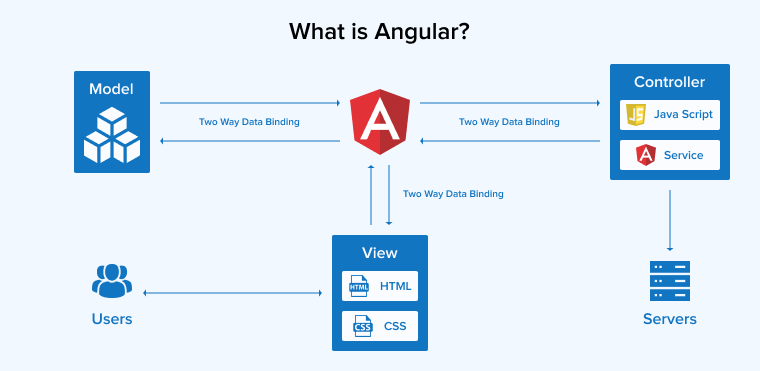
Angular is one of the largest used JavaScript frameworks that enables developers to create native apps and execute client web applications in browsers. The single-page applications created using Angular come with various components written with the help of JavaScript or TypeScript. All these components are decorated with directives to handle things like markup to data or binding the HTML. Besides, reusable web UI is a concept that is possible with Angular.
When it comes to running code in Angular, it won’t directly run on web browsers. This is why one needs compilers to change the code which browsers can easily run. This is possible with the latest version of this framework, Angular 14. It has come with a feature called an Ahead-of-time compiler to transform the code into a publishing process and this means that the web browser can download and execute the compiled code without any issue. Similar to that, developers can also find a Just-in-time compiler for compiling an application in the web browser.
1.1 Pros of Angular
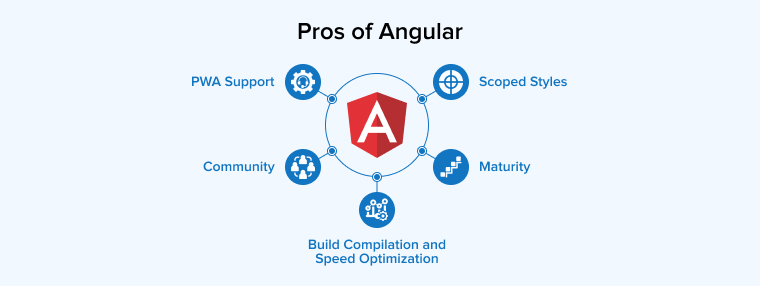
Some of the major advantages of Angular are –
1. Maturity
Angular, an open-source framework has been around for a long time in comparison to Blazor. This framework is production-ready with complete support for MVC/MVVM applications. This is why it is mostly used by many large companies. In comparison to Angular, Blazor is a very promising framework but is still evolving.
Besides, Angular comes with various tools and also offers VS Code support for the software development process that Blazor only implemented some time ago. In addition to this, when it comes to libraries, Angular Material is one of the most famous ones and it has embraced a design language in Google products named Google’s Material Design. Apart from that, Angular also allows easy setup of other major design libraries such as Bootstrap with the help of PrimeNG or NG Bootstrap library.
2. Community
Angular is known as one of the most popular libraries in the market. It has 84.4k stars and 22.3k forks on GitHub. This means that it is definitely the most important framework when it comes to the frontend community.
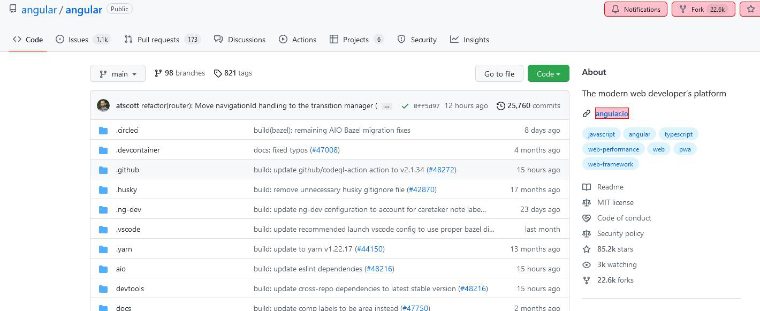
On the other hand, it is difficult to analyze Blazor’s popularity as the project was moved to the ASP.NET Core repo after it became an official part of the ASP.NET project. Angular has a larger community of developers who can help other programmers to work with this framework and create amazing single-page applications for the end-users. Besides this, as Angular is a product of Google, it is obvious that it will have a huge community of corporations and individuals.
3. PWA Support
When it comes to Progressive Web Applications (PWAs), Google is one of the biggest fans of it. This is why Angular is the widely used framework for creating PWAs. The usage of PWA can be easily added to Angular apps. For this, the developer only needs to run a simple line of code and that is –
Check out this tweet!
ng add @angular/pwa |
✨ Angular CLI tip: ✨
— Angular (@angular) September 21, 2020
ng add @angular/pwa allows you to add Progressive Web App support in the command linehttps://t.co/BUCDRTNjAE pic.twitter.com/Q4b2CcsYGZ
This is not possible with Blazor. It is categorized under the list of frameworks that are incapable of doing PWA, but recently they have announced that they support PWA. But nothing compared to the PWA support that Angular has to offer. It offers amazing services for creating progressive web apps and also enables the developers to offer exceptional after support. This makes Angular the first choice for many developers who are creating PWAs for their clients.
4. Build Compilation and Speed Optimization
Angular CLI has some inclusions, check this tweet!
Angular CLI v12 includes the new Ivy Library Distribution process with no overheard to library owners and consumers ✨
— Angular (@angular) August 12, 2021
Your libraries will now be released for native Ivy distribution…and this all happens automatically, thanks to #ngUpdate
📚 https://t.co/3aQwmw6zRt
The latest version of Angular, Angular v14 has come with the complete absence of a view engine. Instead of that, Angular is using a rendering engine called Ivy. The usage of Ivy has made Angular one of the fastest frameworks for compilation and the highest productivity. In addition to this, one other thing that Angular v14 has to offer is that persistent build-cache and that too is a default setting for all new projects. This means that the speed of the software development process will be better than before.

5. Scoped Styles
Angular is a framework that enables the usage of scoped styles. With this the developers can easily apply a CSS style in the project specifically for a related component. Though this is a controversial feature, it is known as one of the biggest advantages of using Angular for your project.
2. What is Blazor?

Blazor is a popular Microsoft web framework that enables developers to create web applications that can easily run on browsers with the help of C# and not TypeScript. It is a framework that brings out the apps with the selected packages at the time of development and this process is important if a developer wants the system to work properly. In Blazor, if you want to add new packages, you need NuGet and then you can start creating apps as an array of components with the help of a markup language of Razor and UI logic.
In Blazor, the browsers cannot directly execute the code written in C#. Therefore, like the Angular Ahead-of-time approach, Blazor is dependent on the C# compilers to compile the C# and Razor syntax into different .dll files. When it comes to publishing the app, the developer has to use in-built publish commands of .NET that help in bundling up the app into various files like DLLs, CSS, HTML, JavaScript, etc. These files are then published to web servers.
New Blazor series is here, check this tweet!
2.1 Pros of Blazor
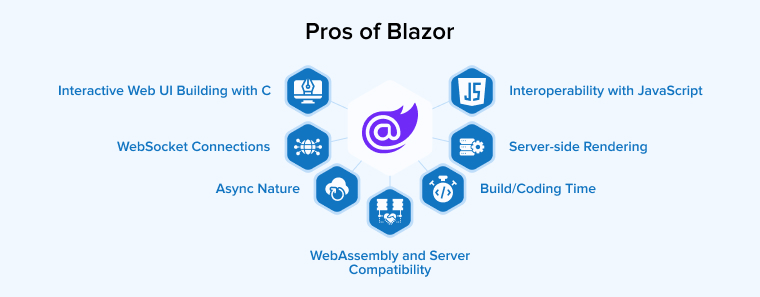
Some of the major advantages of Blazor are –
1. Interactive Web UI Building with C#
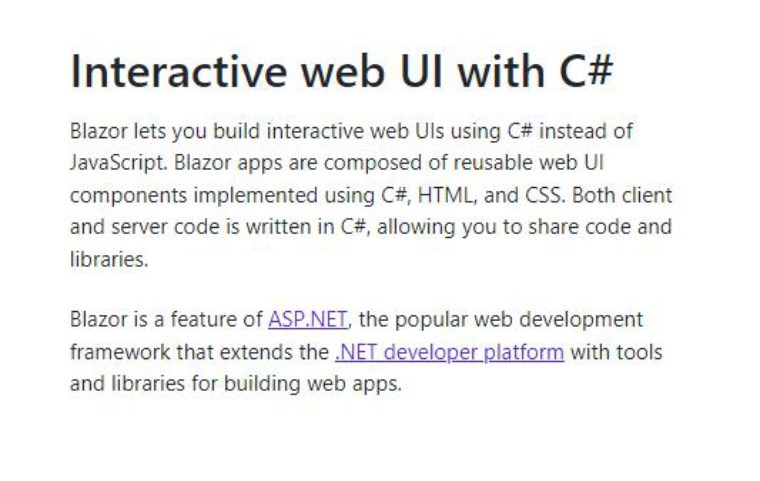
When the interactive web development concept was new to the world, JavaScript was the only programming language that was available in the market to support the building of applications that run on both servers and clients. But with modern technologies coming into the market, we got C#. It is used to create apps that can run on both a server and a client-side. And this allows the web app developers to share and reuse libraries & codes. Similarly, Blazor is a framework that allows developers to build interactive web UIs with the help of CSS, HTML, and C# without having to use JavaScript.
Therefore, the C# developers don’t have to learn and understand JavaScript to create client-side applications. In addition to this, Blazor enables the experts to create apps that can run directly in the browser without any requirement of code translation.
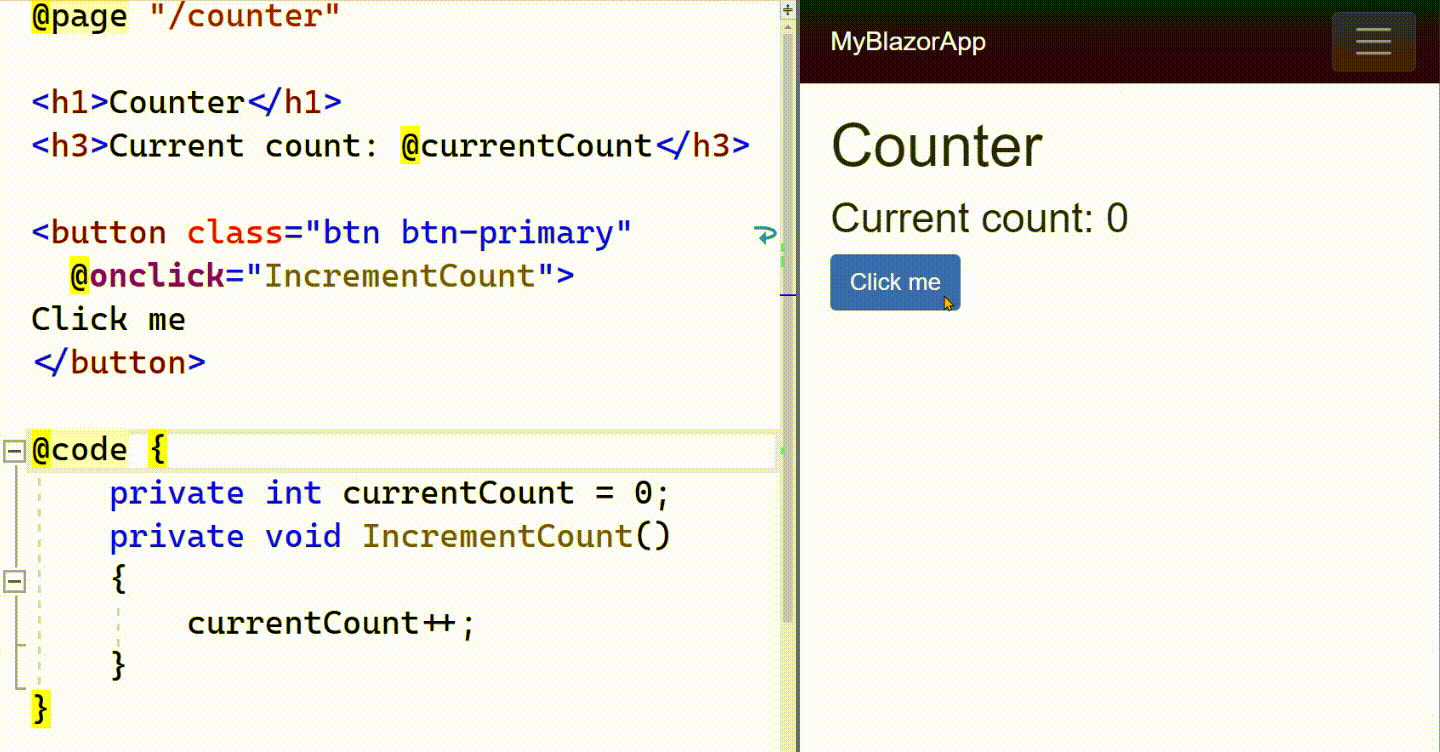
2. WebAssembly and Server Compatibility
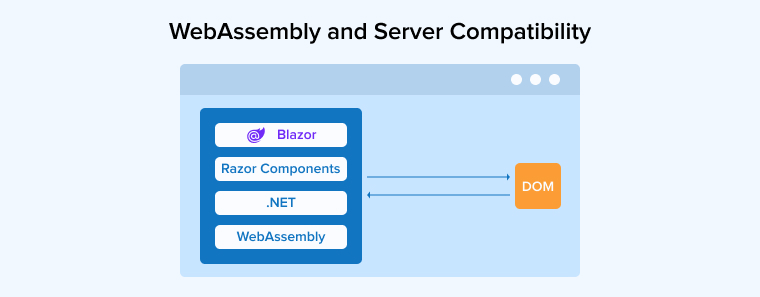
Blazor can easily run the client-side C# code into the browser with the help of WebAssembly. This means that the developers can create a client logic that can also be run on the server when they are working with Blazor. For this, the developers can use SignalR, a real-time messaging framework. It is mostly used when there is a need to transmit client UI events to the server. Here, the UI updates are smoothly communicated to the client and then they are merged into the DOM after the execution of the app’s code is completed.
3. Interoperability with JavaScript
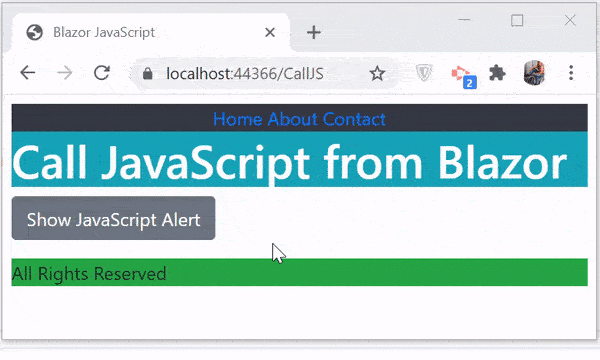
When it comes to using Blazor in the web development world, the use of JavaScript libraries and APIs comes naturally in the C# codebase. This means that when the developers are creating logic in C#, they can also run alongside JavaScript libraries for the app’s client-side user interface. All these things can be carried out without depending on third-party data libraries.
Blazor also embraces JavaScript Interop, and you can develop Razor Components using Razor Class Libraries.
Blazor also supports JavaScript Interop and you can use Razor Class Libraries in order to create Razor Components \o/.#dotNetConf pic.twitter.com/0JShlsiSlc
— Jeremy Sinclair #ฺNET (@sinclairinat0r) September 23, 2019
4. Server-Side Rendering
Be it any web framework, server-side rendering is a concept that is well-known by many frontend experts. But when it comes to Blazor, it prefers to call this concept prerendering. Basically, server-side rendering is an approach that comes with a process of compiling all the app’s elements and components on the server-side and after that, it generates the static HTML to send to the client. This helps in improving the performance of the application.
Pre-rendered pages are faster than ordinary ones. This is why server-side rendering is known as the best feature.
Blazor already supports this hybrid rendering (client or server) with same component model.
— Sk (@skclusive) May 11, 2020
Hence moved my reactjs/mobx saas prototype to Blazor server side. seeing better results and productivity as my server side is already .NET Core. #reactjs #blazor #efcore #dotnet https://t.co/F1OOIBex9i pic.twitter.com/9nEkulQoO5
5. WebSocket Connections
While using Blazor, the developers can make the app’s data move back and forth and this is possible with the help of a WebSocket connection. Because of this, the initial page size of the Blazor web app is smaller when downloaded compared to Angular. This is because of the verbosity and boilerplate codes that Angular offers in the downloaded bundles. Basically, when the application is capable enough to send messages from a server to the clients in real-time, it is known as the best feature that the app can offer. For this Blazor uses WebSocket to have an active connection between the client and the Blazor server-side. It sends data via push to the Blazor app’s components in a faster manner.
This is how you can establish a SignarR connection over WebSocket:
With Server-Size Blazor the file blazor.server.js exstablish a SignalR connection over websocket. All the processing is done server side and UI updates, event handling, JavaScript calls are handled over the SignalR connection. #aspnetcore #blazor #csharp #dotnetcore pic.twitter.com/4z3lIpsFsk
— Andrea Angella (@angella_andrea) July 6, 2019
6. Build/Coding Time
One of the biggest advantages of this web platform is that it is very fast in terms of creating and debugging the application. This is because it uses Visual Studio and the entire experience accumulated with its plugins and tools for creating modern web apps and debugging them. But this feature completely depends on the compilation and creation time of the application. Besides, while working with Blazor, the developer is already in the back-end, so that they can easily write different methods on services that the upper layers can directly call rather than going through the entire structure of an API, which is the case in Angular.
7. Async Nature
In C#, asynchronous programming is fraught with pitfalls. Here is the tweet offering series of blog articles on how to make async/await programming less excruciating
Asynchronous programming in C# is full of traps.
— 🛠 Cezary Piatek – Automation Tycoon (@cezary_piatek) April 22, 2021
Here’s my blog post series on how to make coding with async/await less painful:
Part I: https://t.co/J54e6laBVD
Part II: https://t.co/RCbWzBoa6x
Summary: https://t.co/r6xKdfNZOy#dotnet #dotnetcore pic.twitter.com/U235FEkxpW
While working with open-source web frameworks, usage of the async nature concept might differ from one framework to another. For instance, Angular makes the developer use the inbuilt async nature that is inherited from JavaScript and it also supports the RxJS to manage the operations of async. But with the advancements in C#, it has started to support async nature out of the box. This means that it has made async nature a very simple and clean process for the developers.
3. Blazor vs Angular – Comprehensive Comparison
Here we will go through the primary differences between both Blazor and Angular.
3.1 Learning Curve
- Angular – This JavaScript-based framework has a bigger learning curve than Blazor, Specially for C# / .NET developers.
- Blazor – This open-source framework has an easy on-ramp for Visual Studio and C# developers.
3.2 Production-Ready
- Angular – Today, Angular is a production-ready framework after years of battle-tested app deployments.
- Blazor – After the release of .NET 6, Blazor has become the production-ready framework for most applications.
3.3 Performance
- Angular – It offers better performance because of its maturity.
- Blazor – Microsoft is trying to tune Blazor’s performance after the release of .NET 6.
3.4 PWAs (Progressive Web Apps) Support
- Angular – Yes
- Blazor – Yes (Blazor Web Assembly)
3.5 Code Style
- Angular – It requires lots of boilerplate to get started.
- Blazor – It can be optimized for less boilerplate which means that it can be easily started.
3.6 Scoped Styles for Web Pages Component
- Angular – Yes
- Blazor – Yes
3.7 Tooling
- Angular – It offers CLI and other 3rd party options.
- Blazor – It offers Visual Studio, CLI, and many other 3rd party options.
3.8 Bundle Size
- Angular – The bundle size is < 50KB.
- Blazor – The bundle size is between 393kb to 780kb.
3.9 Optimized for SEO
- Angular – Server-side rendering
- TBlazor – Yes
4. Conclusion
As seen in this blog, both these open-source web frameworks are popular and powerful to solve different types of issues that the web development teams might face while creating apps for modern web browsers. But in this case, Angular outshines a bit as it is a part of the web development market for a long time compared to Blazor. Besides, if the developers don’t have proper knowledge of .NET, the most popular programming language, using Blazor will be trickier. This means that when it comes to choosing one of these for your next project, understanding these frameworks, having knowledge about the multiple languages used in these frameworks, and their advantages is very important.




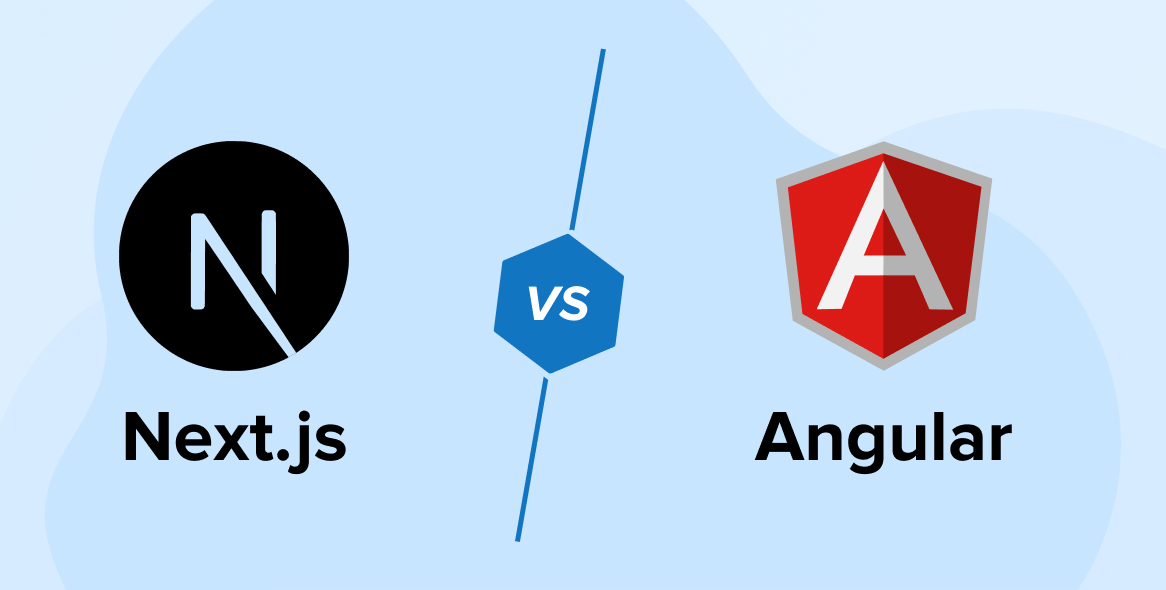

Comments
Leave a message...